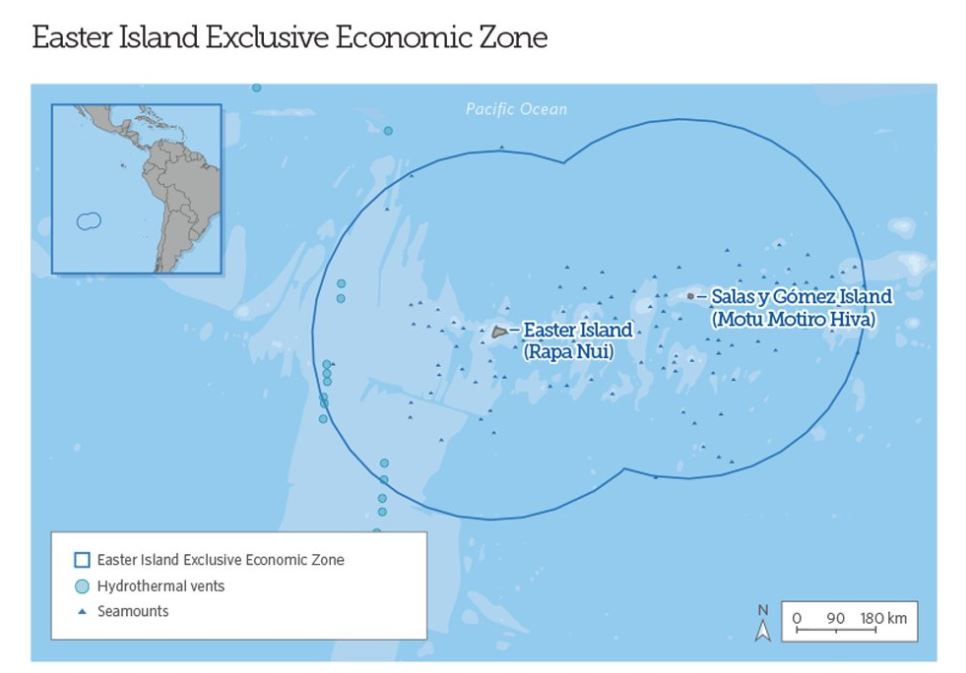The final step to protect the unique waters around Easter Island through the establishment of a Marine Protected Area (MPA) was completed today, February 27th, 2018, when Chilean President Michelle Bachelet signed the decree.
The new Rapa Nui MPA covers 720,000 km2, an area of ocean about the size of France, and guards against industrial fishing and extractive activities, while protecting the traditional fishing practices of the Rapa Nui. It was achieved through the hard work and leadership of Rapa Nui groups, including a coalition of business leaders, fishers, and more than 20 local organizations, along with support from the Bertarelli Foundation and the Pew Charitable Trusts.
Co-chair of the Bertarelli Foundation, Dona Bertarelli said:
“This is an incredible moment in the history of Easter Island. The Bertarelli Foundation is very proud to have accompanied the Rapa Nui for the past six years, as they campaigned to protect their waters and their heritage.”
The area around Easter Island is one of the most unique marine environments in the world and home to at least 142 endemic species, including 27 that are threatened or endangered. The Rapa Nui MPA contributes a huge stretch of ocean to the global push for 30% of the ocean in protection by 2030, the target recommended by scientists and the International Union for Conservation of Nature, but there is still a very long way to go.
Dona Bertarelli stated:
“Chile has shown its leadership to conserve the global ocean, and looking forward, there is a lot more work to be done by countries everywhere if we are to protect 30% of the ocean by 2030.”
Large scale MPAs are acknowledged as essential to building resilience of the ocean in a changing climate, helping to protect marine life and conserve complex ecosystems. But they will only work if the MPAs are robust and offer genuine protection.
The 30% target can be achieved through both the creation of MPAs in territorial waters and the protection of large areas of the high seas, which are beyond any one country’s national jurisdiction. Negotiations towards a new UN Treaty to protect the biodiversity of the high seas start later in the year and the Bertarelli Foundation is keen to see a strong outcome so that more of the ocean can be protected.
The first UN Intergovernmental Conference to negotiate a treaty to protect biodiversity in areas beyond national jurisdiction will be held in September 2018.




